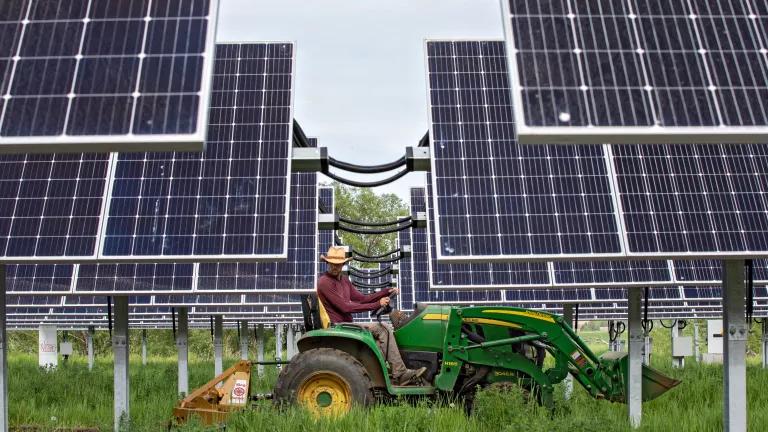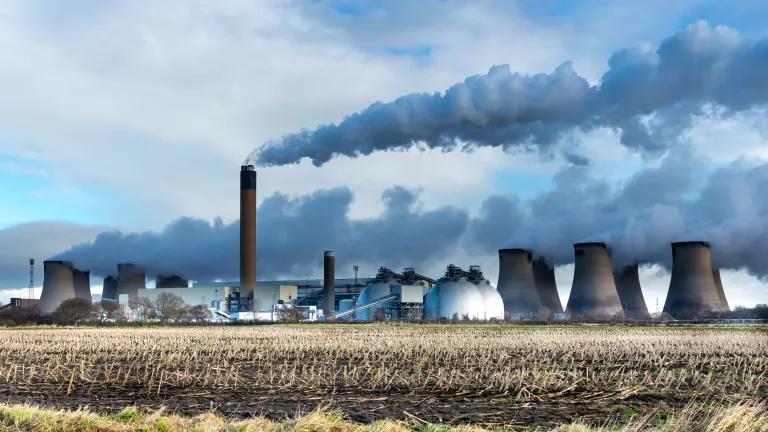Public Lands Can Help Solve the Climate Crisis
Our public lands should be conserved and restored and become part of the climate solution toolkit—as opposed to destroyed for fossil fuel development.
America’s public lands should be part of the climate change solution—not part of the problem.
This is one of many takeaways of the long-awaited plan the U.S. House of Representatives Special Select Committee on the Climate Crisis has released, providing specific recommendations on climate action. The plan cites the adverse impacts that fossil fuel development has on public lands, communities, and the climate. It also acknowledges the important ways America’s public lands can support ecosystems and help combat the climate crisis.
The Intergovernmental Panel on Climate Change (IPCC) warned about the rapidly shrinking window of time remaining to try to avoid the worst impacts of climate change—including a target to hold global temperature rise to 1.5° Celsius, as we previously reported. But we are heading in the wrong direction.
Atmospheric carbon dioxide concentrations in May 2020 exceeded the highest monthly average recorded, following the second hottest year ever experienced in 2019, according to the Select Committee. Climate change yields heat waves, extreme storms, droughts, flooding, and a host of other adverse consequences. The most vulnerable populations—low-income communities and communities of color that have been hardest hit by the COVID-19 pandemic—also suffer disproportionately from the impacts of climate change.
At Present, Public Lands Are Adding to the Climate Crisis
The Select Committee specifically calls out leaking oil and gas infrastructure – from well pads to pipelines—that release a powerful greenhouse gas, methane, which can warm the planet more than 80 times as much as carbon dioxide over a 20-year period. Deep reductions in methane pollution are essential for limiting global warming to 1.5° Celsius, according to the IPCC.
The Select Committee recommends a national methane pollution reduction goal for the oil and gas sector of 65% to 70% by 2025 and 90% by 2030, relative to 2012 levels; phase out of routine flaring of methane; and agency implementation of rules to achieve these reductions. The Committee also recommends that Congress direct regulators to set new standards for pipeline operators to detect and repair methane, and eliminate exemptions from bedrock environmental laws that benefit the oil and gas industry, such as the Clean Air Act, Clean Water Act, and Resource Recovery and Conservation Act.
But while Congress makes recommendations for greenhouse gas reductions, the Trump Administration has put us further behind in meeting climate goals by rolling back safeguards that would have reduced waste of gas from venting, flaring, and leaks during oil and gas production on onshore federal and tribal lands. It also continues to offer millions of acres of public lands to the fossil fuel industry with minimal public input and little consideration for the climate.
For example, the Department of the Interior’s Bureau of Land Management recently offered oil and gas leases in the redrock wildlands of Utah on the doorstep of Canyonlands, Arches, and Capitol Reef National Parks and Bears Ears National Monument. And it’s moving forward with a plan to allow even more horizontal drilling and hydraulic fracturing in the Greater Chaco region of New Mexico—despite the fact that indigenous communities most impacted are unable to participate in the public comment period due to the COVID-19 pandemic. The Administration also allowed an oil company to continue its hunt for oil in the Florida Everglades’ Big Cypress National Preserve despite extensive damage to wetlands and endangered species habitats caused by prior destructive seismic testing. If oil is found, drilling could follow.
And it’s not just oil and gas.
The Administration is desperately clinging to coal—proposing to make vast amounts of coal available in the Powder River Basin in Wyoming and Montana—despite a court victory requiring the Bureau of Land Management to analyze and disclose to the public the climate impacts of its plan. Courts continue to hold the Administration accountable for its failure to study and inform the public about the climate impacts of its fossil fuel decisions. Yet our public lands remain available to the highest bidder.
According to the Select Committee, fossil fuel extraction on public lands is responsible for nearly a quarter of total U.S. carbon dioxide emissions, making public lands a net-emitter of greenhouse gas pollution. The Committee recommends a comprehensive federal strategy that transforms America’s public lands into valuable carbon sinks, serving as a cornerstone of a successful climate plan.
Our Public Lands Can Become Part of the Climate Solution
The report explains that public lands can sequester carbon and make ecosystems and communities more resilient to the impacts of climate change. Ecosystems such as forests, grasslands, and wetlands are natural and efficient carbon sinks, capturing and storing carbon in roots, plants, and soils.
Notably, the report also highlights that building a clean energy economy can help put unemployed Americans back to work and relieve the economic crisis sparked by the COVID-19 pandemic. Financial support is also necessary to assist fossil fuel workers and their communities with a just transition away from fossil fuels.
In addition to providing climate benefits, our public lands also contribute billions of dollars to the economy due to the visitor and recreational opportunities they provide.
The Select Committee makes the following recommendations for Congressional action, among others, which we support:
- Impose a moratorium on all new fossil fuel leases on public lands, while ensuring robust economic development and worker transition assistance for communities dependent on fossil fuel extraction;
- Require the Bureau of Land Management to consider the impacts of land use management actions on greenhouse gas emissions and climate change mitigation;
- Develop a comprehensive climate strategy to achieve net-zero emissions on public lands with a goal of eventually achieving net-negative emissions so that America’s public lands become a carbon sink;
- Protect wild and special places and make them off-limits to drilling and mining activities, including irreplaceable cultural sites, national parks and monuments, federal lands adjacent to parks, and important wildlife habitats and corridors;
- Restore robust public participation in oil and gas leasing decisions;
- Maximize deployment of natural climate solutions, such as reforestation and wetland restoration, to combat climate change;
- Reduce methane pollution from oil and gas extraction;
- Increase renewable energy production;
- Eliminate unfair and expensive government subsidies for oil and gas drilling on public lands;
- Establish and maintain robust environmental review of and bonding requirements for all proposed projects on public lands;
- Reclaim orphaned wells that pose safety and environmental threats; and
- Require air quality monitoring for criteria and hazardous air pollutants in areas with significant oil and gas development and ensure that this information is made available to affected communities.
Our public lands should be conserved and restored and become part of the climate solution toolkit—as opposed to destroyed for fossil fuel development. Continuing to give away and exploit our public lands for dirty energy development will only keep us from meeting our climate goals and further damage wildlands, wildlife, cultural resources, and communities.



